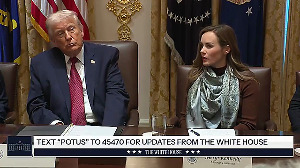The Indian mobile subscriber base continues to grow and reached about 64.4 million in September from about 42.4 million a year ago.
About 80 per cent of them are GSM cellular mobile subscribers while the rest are with CDMA-based service provided by the unified access service providers. The compounded annual growth rate of mobile subscriber base has been 89.5 per cent over the past five years.
Looking at this growth pattern, the target set by the communications minister of achieving 200 million mobile subscribers by year 2007 looks very much plausible. However, will the current growth rate continue and if so is the target we have set for ourselves possible?
The economic literature dealing with communication networks and the diffusion of innovation theory, which defines the process by which innovations such as cellular services are communicated among members of the social system, postulate that the growth of such services is S-shaped.
A typical growth curve that has an S-shape has three distinct phases. In the initial stages, growth is less as subscribers are not fully informed and aware about the utility they derive by joining the system.
However, as the number of subscribers attains a "critical mass", growth increases near exponentially in the second phase. The last stage indicates stability in growth as the saturation level of subscribers is reached.
We analysed quarterly data on Indian mobile subscriber base (including both GSM and CDMA subscribers) from first quarter of 1997 until the third quarter of 2005 and fitted a logistic non-linear regression model of S-curve. The fitted growth curve closely matches the actual growth.
This indicates that even though we are in the second stage of exponential growth phase, the mobile subscriber base will reach saturation below the 100-million mark.
A closer analysis of the growth pattern leads us to predict that the subscriber base in metros will reach saturation at about 26 million (from the current 15.7 million); category A circles at 28 million and category B circles at 33 million.
Large circles such as Uttar Pradesh (east), Uttar Pradesh (west), Madhya Pradesh and high growth areas such as Kerala and Punjab can be expected to top provide growth in category B circles.
However, category C circles are still witnessing exponential growth having attained a critical mass as late as in 2003. In fact, the compounded annual growth rate of mobile subscriber base for the last two years has been 57 per cent, 64 per cent, 83 per cent and 127 per cent respectively in metros, category A, B and C circles.
The metros and category A circles will reach saturation soon. The operators should actively look at expanding their presence in category B and C circles for sustaining the growth momentum.
There are critics of the S-curve growth pattern, the prominent ones being those who proved that Internet growth is still exponential and the saturation point as predicted by previous researchers has been surpassed.
Specifically, the S-curve theories ignore such external factors as government policies, technological advancements, and service innovations.
The sub-$20 mobile phone developed by Motorola might prove to be disruptive, thus improving mobile penetration amongst low-income population in the country. The pathetically low rural teledensity of 1.94 per cent needs revitalisation.
New policy initiatives such as providing Universal Service Obligation Fund support to mobile service providers, backbone operators, shared infrastructure providers, and VSAT operators providing service in rural areas of the country as specified in Trai's recent recommendations if implemented, will provide a fillip to rural penetration.
All the above, combined with the promotion of indigenous low-cost technologies such as corDECT and 450 MHz spectrum in rural and remote areas of the country might well break the S-curve syndrome!
The writer is professor, Management Development Institute, Gurgaon





